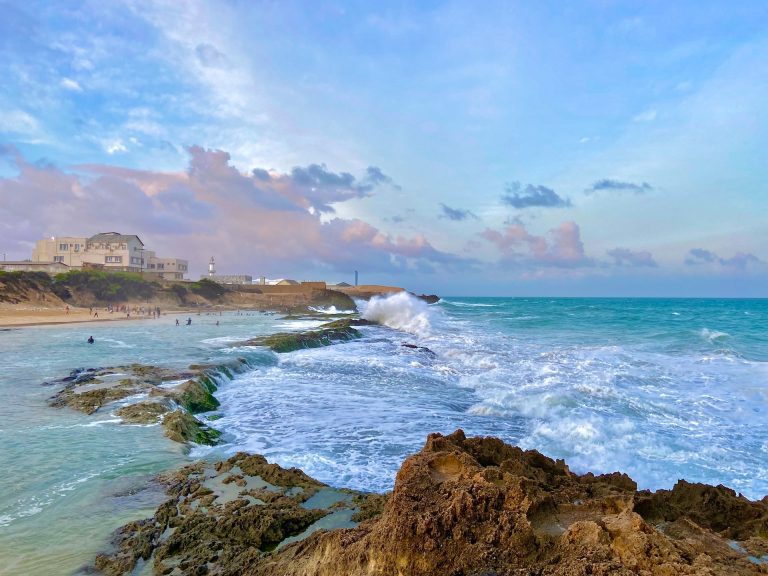Unveiling the Mystique of LIBYA: A Comprehensive Libya Travel Guide

Unveil the mysteries of its ancient history, immerse yourself in its rich culture, and savor the flavors of its traditional cuisine. In this comprehensive Libya travel guide, we’ll provide you with essential information to help you navigate through Libya’s unique landscapes, discover its hidden gems, and create unforgettable memories.
Fast Facts About Libya
- Climate: Libya has a Mediterranean climate along the coast with hot, dry summers and mild winters. Inland areas experience a desert climate with extremely high temperatures during the day and cooler nights.
- Local Currency: The currency used in Libya is the Libyan Dinar (LYD).
- Power Voltage: The standard voltage is 230V, and the standard frequency is 50Hz. The plugs commonly used are Type C and Type L.
- Language: Arabic is the official language, but English is widely spoken in tourist areas.
- Religion: Islam is the predominant religion, and the majority of Libyans are Muslims.
- Safety: Before traveling, check for travel advisories and stay informed about the local situation. Some areas may have safety concerns due to conflict or political instability.
- Cultural Etiquette: Respect local customs and traditions. Dress modestly, especially in more conservative regions.
- Tipping: Tipping is not mandatory but is appreciated for good service. A 10% tip is generally considered appropriate.
- Health: Make sure you have up-to-date vaccinations before traveling and carry necessary medications and a first aid kit.
Best Time to Visit Libya: Seasons and Festivals
- Spring (March to May): Spring is a pleasant time to visit as the weather is mild, and the landscapes are green and vibrant.
- Summer (June to August): Summers can be scorching, especially in the desert areas. Coastal regions are more moderate and offer relief from the heat.
- Autumn (September to November): Autumn is another favorable time to visit with pleasant temperatures and clear skies.
- Winter (December to February): Coastal areas remain mild during winter, while the desert regions can get chilly at night.
- Festivals: Ramadan, the Islamic holy month of fasting, is observed, and visitors should be respectful of local customs during this time. Other festivals vary each year based on the Islamic lunar calendar.
Top Attractions and Things to See and Do in Libya
- Leptis Magna: Explore the well-preserved ancient Roman city of Leptis Magna, known for its impressive architecture, grand amphitheater, and intricate mosaics.
- Sabratha: Discover the ruins of another Roman city, Sabratha, which boasts beautiful marble columns, a theater, and a museum showcasing artifacts from the past.
- Ghadames: Wander through the charming old town of Ghadames, a UNESCO World Heritage site, known for its unique architecture and vibrant marketplaces.
- The Sahara Desert: Embark on an unforgettable desert adventure in the vast Sahara, where you can experience camel treks, sand dunes, and stargazing under the clear desert sky.
- Benghazi: Visit the bustling city of Benghazi, home to the Red Castle Museum, which features an extensive collection of historical artifacts.
- Cyrene: Explore the ancient Greek city of Cyrene, with its well-preserved ruins, including temples, agora, and necropolis, all surrounded by breathtaking landscapes.
- Medina of Tripoli: Roam the narrow alleyways of the Medina of Tripoli, a UNESCO site, and soak in the atmosphere of the traditional markets and historic architecture.
- Akakus Mountains: Marvel at the stunning rock formations and prehistoric rock art found in the Akakus Mountains, a testament to Libya’s ancient history.
- Sebkha el Melah: Visit the unique salt flats of Sebkha el Melah, where the stark white landscape contrasts with the blue sky, creating a surreal environment.
The Best Ways To Get Around Libya
- Domestic Flights: Domestic flights are the quickest way to cover long distances between major cities in Libya.
- Taxis: Taxis are widely available for short trips within cities. Negotiate fares in advance or ensure the meter is used.
- Shared Minibuses: Shared minibuses, known as “Louages,” are a common mode of transportation between towns and cities.
- Car Rentals: Renting a car allows for flexibility in exploring the country, especially if you’re planning to visit remote areas or historical sites.
- Ferries: Ferries connect some coastal cities, providing an opportunity to explore different regions along the Mediterranean coast.
- Guided Tours: Opt for guided tours to archaeological sites and cultural landmarks to gain insights from knowledgeable local guides.
- Local Transportation: Within cities, you can use buses, trams, and other forms of local transportation to get around.
Accommodation Tips: Libya
- Hotels: Choose from a range of hotels in major cities like Tripoli and Benghazi, offering various amenities and price points.
- Guesthouses and Hostels: Consider staying in guesthouses or hostels for a budget-friendly option while getting a chance to interact with fellow travelers.
- Camping: Experience the adventure of camping in the desert or along the coast. Be sure to research safe camping locations and check local regulations.
- Booking in Advance: During peak tourist seasons, it’s advisable to book your accommodation in advance to secure your preferred stay.
- Local Accommodation Options: Explore traditional accommodations like kasbahs or mud-brick houses for an authentic experience.
Libya Travel Guide: Money-Saving Tips
- Free Museums and Attractions: Take advantage of free entry to museums like the National Museum of Libya in Tripoli, showcasing the country’s history and culture.
- Local Eateries: Dine at local eateries and street food stalls to savor authentic flavors without breaking the bank.
- Public Transportation: Utilize public buses and shared minibuses to get around cities and towns economically.
- Haggle at Markets: When shopping at local markets, don’t hesitate to negotiate prices for souvenirs, textiles, and handicrafts.
- Group Tours: Consider joining group tours to share costs for transportation and guide services.
- Homestays: Experience the local way of life by opting for homestays or guesthouses run by locals.
- Water and Snacks: Carry a reusable water bottle and snacks to save money on beverages and light bites while exploring.
Culinary Delights and Traditional Cuisine in Libya
- Couscous: Indulge in hearty couscous dishes with tender meats, vegetables, and fragrant spices.
- Bazeen: Try bazeen, a traditional dish made from barley flour, olive oil, and vegetables, often enjoyed with lamb or chicken.
- Shorba: Sample shorba, a comforting soup often made with lentils, tomatoes, and spices.
- Machbous: Enjoy machbous, a rice dish cooked with meat, vegetables, and aromatic spices.
- Date Sweets: Savor date-based sweets like maakroun, a deep-fried pastry, and sellou, a nutty dessert.
Souvenir Ideas: Bringing a Piece of Libya Home
- Traditional Textiles: Purchase handmade textiles, such as carpets, rugs, and embroidered fabrics, reflecting Libya’s rich cultural heritage.
- Spices and Herbs: Bring home fragrant spices and herbs like saffron, cumin, and coriander to infuse your dishes with Libyan flavors.
- Ceramics: Choose from a variety of locally crafted ceramics, including pottery, plates, and decorative items.
- Silver Jewelry: Shop for intricate silver jewelry pieces adorned with traditional designs, often representing the country’s history.
- Desert Sand Art: Consider unique sand art creations that capture the beauty of Libya’s desert landscapes.
Additionally, check out our articles about 2023 top travel destinations in the world, and the best holiday destinations in 2024.






